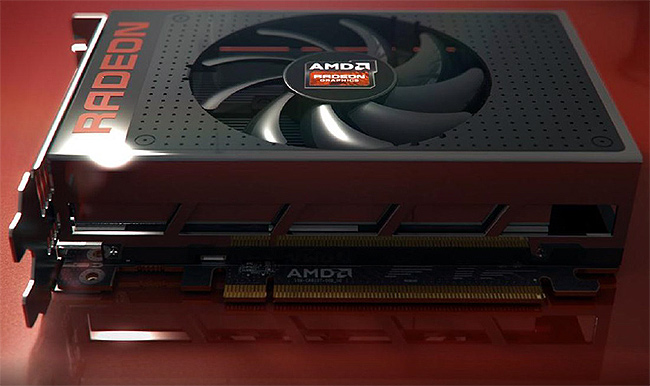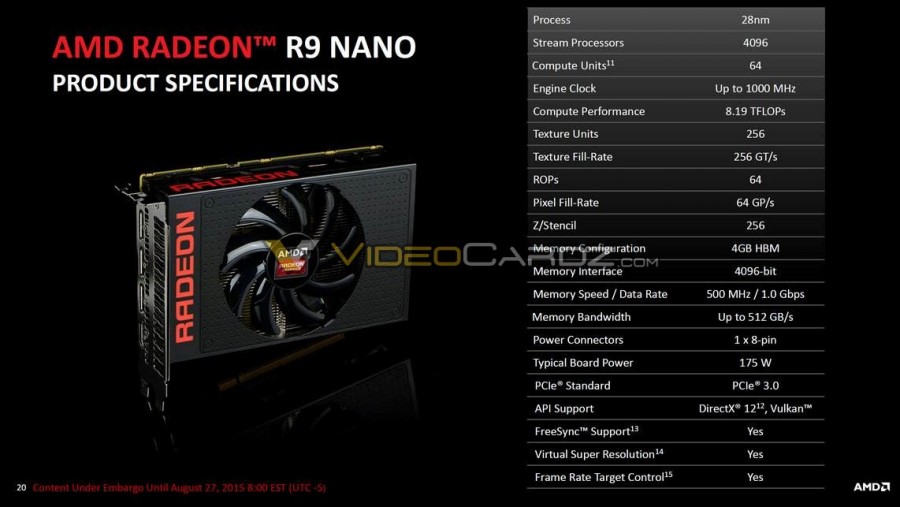It is not a secret that AMD’s upcoming Radeon R9 Nano graphics card will be the most powerful adapter for mini-ITX personal computers ever produced and will have no rivals for quite some time. As it appears, the Radeon R9 Nano will not only offer high performance, but it will actually offer compute performance that will be comparable to that of AMD’s flagship Radeon R9 Fury X.
The AMD Radeon R9 Nano graphics card – which sales are expected to begin in the coming weeks – is based on the fully fledged code-named “Fiji” graphics processing unit with 4096 stream processors, 256 texture mapping units, 64 raster operations pipelines and 4096-bit memory interface, according to slide from AMD’s presentation published by VideoCardz web-site. The graphics board will continue to carry 4GB of HBM [high-bandwidth memory] operating at 1000MHz.
The miniature graphics card from AMD and its partners will have clock-rates comparable to those of the flagship Radeon R9 Fury X. The Radeon R9 Nano will have compute performance of around 8.2TFLOPS, which is only 5 per cent below that of the Radeon R9 Fury X. Actual performance of the Radeon R9 Nano will be considerably higher than that of the Radeon R9 Fury, which uses a cut-down version of “Fiji” with 3584 stream processors, and will be very close to that of the top-of-the-range product.
Thermal design power of the AMD Radeon R9 Nano will be 175W. Many small form-factor personal computers these days can cool-down such graphics cards. Makers of high-performance systems will likely release SFF PCs featuring the Radeon R9 Nano with extreme performance in games in the coming months. Moreover, thanks to the fact that the “Fiji” graphics processor supports hardware-accelerated decoding and encoding of H.265 (HEVC) video, the Radeon R9 Nano can even be used to playback of ultra-high-definition video. Unfortunately, since “Fiji” does not support HDMI 2.0 output, it may not be the best card to build home-theater personal computers for Ultra HD Blu-ray playback.
Pricing of AMD’s Radeon R9 Nano is unknown. Its performance is clearly higher than that of the AMD Radeon R9 Fury, which costs $549, but the product is not as fast as the Radeon R9 Fury X, which retails for $649.
Discuss on our Facebook page, HERE.
KitGuru Says: Keeping in mind that far not all people, even among enthusiasts, like liquid-cooling systems, the Radeon R9 Nano may actually become more popular than the Radeon R9 Fury X. The Radeon 9 Nano will be truly unique and it has all chances to become a best-seller.
 KitGuru KitGuru.net – Tech News | Hardware News | Hardware Reviews | IOS | Mobile | Gaming | Graphics Cards
KitGuru KitGuru.net – Tech News | Hardware News | Hardware Reviews | IOS | Mobile | Gaming | Graphics Cards




